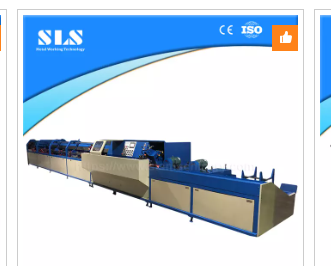Roll pipe bending machines, essential tools in the fabrication of metal pipes and tubes, stand out for their unique capabilities and features. These machines shape pipes by applying a series of rolls to bend them into various curves and angles. Their precise performance, versatility, and efficiency make them indispensable in industries ranging from automotive to construction.
Key Specifications
Power and Capacity
Roll pipe bending machines typically exhibit substantial power levels, which are necessary to handle the significant resistance of bending metal tubes and pipes. The capacity of these machines can range from handling small diameter pipes, such as 1-inch steel tubes, up to large pipes over 10 inches in diameter. The power source might be hydraulic, pneumatic, or electric, each suitable for specific applications and work environments.
Precision and Control
One of the standout features of these machines is their ability to deliver precise bends. Advanced models come equipped with digital readouts and programmable logic controllers (PLCs) that allow operators to set detailed parameters for each bend. This technology ensures that each angle conforms exactly to specifications, minimizing waste and maximizing efficiency.
Advanced Features
Multiple Rolling Capabilities
High-end roll pipe bending machines offer multiple rolling functions. This means they can perform more than one bending operation at a time, significantly speeding up production times. For example, some machines can simultaneously perform bending, twisting, and rolling, which is particularly useful for complex projects.
Customization Options
Many roll pipe bending machines feature customizable options. Manufacturers might offer different types of rolls, such as pyramid, double-pinch, or three-roll push bending configurations, to cater to specific bending needs. This versatility ensures that regardless of the pipe material or the complexity of the design, the machine can be adapted to meet the project's demands.
Ease of Use
User-Friendly Interfaces
Modern roll pipe bending machines incorporate user-friendly interfaces, making it straightforward for operators to manage bending processes. These interfaces typically feature touch screens that provide easy access to all machine functions, from simple operations to complex setups.
Automation and Safety
Automation is a key aspect of modern roll pipe bending machines. With features like automatic load balancing and real-time adjustment capabilities, these machines not only enhance productivity but also improve safety. Automated systems reduce the need for manual adjustments, which lowers the risk of operator injury.
Application Diversity
Versatile in Application
From creating handrails and automotive exhaust pipes to forming structural frames for buildings, roll pipe bending machines serve a wide array of applications. Their ability to work with various metals, from aluminum and steel to exotic alloys, makes them invaluable in many sectors.
Real-World Impact
Companies that invest in high-quality roll pipe bending machine models often see a direct impact on their bottom line. Not only do these machines cut down on material waste, they also boost productivity by allowing for quicker setup times and faster operation speeds.
In essence, the features of roll pipe bending machines are designed to meet the rigorous demands of modern industry. Their powerful performance, combined with precision control and versatile configurations, makes them a pivotal tool in the arsenal of any manufacturer dealing with metal pipe and tube fabrication. With ongoing advancements in technology, these machines continue to evolve, offering even greater efficiency and reliability.
